Chicken poop; we don’t speak of it at the water cooler at work, but we do here in the chicken world because it can be one of the first signs of disease and illness. It’s not important to memorize every affliction that can cause a chicken’s droppings to be abnormal as it is to be able to recognize abnormal poop and know what to do about it.
It helps to understand a little bit about the journey food takes through a chicken’s body to appreciate the end result.
Food and water travels from the mouth, down the esophagus and into the crop where it is stored before moving down into the stomach (proventriculus). Digestive enzymes are added and food then moves into the gizzard (ventriculus) which grinds up the food. Grit or small stones eaten by chickens aid in breaking down food in the gizzard before passing into the intestines.
The ceca branch off the small intestine and absorb water contained in the fecal matter as it passes through. They serve several purposes, one of which is to ferment matter not previously broken down. The ceca empty out their oh-so-foul-smelling contents several times a day. Cecal poop has a different texture and color from other droppings, it also has an extra heavy dose of STINK, however it is a very good indication that the digestive tract is working properly. Cecal poop color can range from yellow to black.
The last stop on the GI train is the cloaca. Here, the contents that have passed from the intestines combine with urates. Chickens do not urinate in the typical way, they eliminate waste products from the urinary system in the form of urate, which appear as a white cap on the top of the feces.
Eggs and fecal matter are both passed through the hen’s vent. The end.
PROBIOTICS FOR DIGESTIVE HEALTH
Probiotics are live, nonpathogenic bacteria that contribute to the health and balance of the intestinal tract. Probiotics keep bad bacteria in check by acidifying the gut, reducing pH by competing with bad bacteria & winning (aka: competitive exclusion). Fortunately, most nutritionally complete chicken feeds contain probiotics and prebiotics already- there is no need, nor benefit, to adding more to a flock’s diet.
NORMAL CHICKEN DROPPINGS
Broody Poop- Normal
A broody hen sits on a nest hoping to hatch eggs; not wishing to foul her nest, she retains her droppings for hours instead of the usual, frequent deposits throughout the day. She briefly leaves the nest once or twice a day to eat, drink and relieve herself, leaving behind broody poop- the most horrendous-looking, foul-smelling, ginormous intestinal expulsion there is.
Both of the following two photos show normal chicken poop from chickens that had been eating red/purple cabbage. Always consider what a chicken has been eating when thinking about whether its droppings are abnormal.
Droppings boards in a coop catch the nightly deposits and keep the litter cleaner, longer. Scraping down the droppings boards daily provides an opportunity to observe anything abnormal. Blood found in droppings are not normal and should be investigated.
9/14/12. Moments before we brought our dog to the vet’s office this morning, I found this suspicious deposit on the droppings board. My first thought was that it could be worms given the shape and color, so I grabbed a plastic bag and brought it to the vet for a fecal float test. Most vets, even those that do not ordinarily treat chickens, will perform a fecal float test for patients when asked. Many will even do it free of charge as my vet did.
When one chicken is found to have worms, the entire flock must be treated. Worming is serious business and ought not be taken lightly as it is taxing on a chicken’s body. Indiscriminate use of de-worming medications is inadvisable because worms can build up a resistance to them.
The float test confirmed that this specimen contained no evidence of worms nor coccidia. Gross, yes, but not a problem.
ABNORMAL DROPPINGS
The hen responsible for this specimen showed no symptoms of any problem either before or after she produced this. The blood and greenish component could be an indicator of worms; the watery nature combined with the blood could be an indication of coccidiosis. I monitored her carefully for a recurrence and was prepared to treat her for cocci but it was not necessary. This was the first and last poop of this kind by this hen. Had it happened a second time, I would have had a fecal float test performed (see below).
While this foamy, yellow specimen is abnormal (diarrhea) the chicken had no further such deposits and was otherwise well. Her diet was balanced and she was drinking normally. Yellow, foamy or greasy-looking chicken poop can be a sign of internal parasites (worms, coccidiosis) an infection, (bacterial or viral) a diet too high in protein or kidney dysfunction.
The hen responsible for the droppings in this photo had no sign of illness prior to discovering these droppings on the droppings board, but she had coccidiosis, a serious intestinal infection, which required treatment of the entire flock.
The next two photos were from Esther, a 4 year old Easter Egger who had ovarian cancer that had spread throughout her internal organs. She had stopped eating and was passing watery, dark green colored droppings. She was euthanized by a vet shortly after this photo was taken. RIP Esther.
The first indication of trouble in this hen was discovered on the droppings board underneath her preferred roosting spot. Abnormal poop from a hen dying of cancer in this instance.
The chicken responsible for this installment was suffering from a bacterial infection. When his immune system was compromised by the infection, roundworms had a chance to flourish. The roundworms were treated.
These droppings were from Stella, my Silver Spangled hen who was approximately 5 years old at the time. She had a severe case of egg yolk peritonitis and was euthanized by a vet upon discovery.
This hen had a roundworm infestation. After treatment she perked up and was back to business as usual. The entire flock was treated and all affected birds showed improvement within 24 hours of being medicated.
WHAT TO DO WHEN DROPPINGS APPEAR ABNORMAL
When abnormal droppings are found, it is important to look for any other symptoms that might suggest illness or parasites such as: loss of appetite, weight loss, lethargy, increased thirst or a drop in egg production. The chicken’s diet should also be assessed to see whether it is balanced. Too much protein or drinking large amounts of water can cause watery-looking droppings. If additional symptoms are noted, the cause needs to be determined. Ideally, a droppings sample will be brought to a veterinarian for a fecal float test. All vets routinely perform fecal float tests on other animals’ droppings and even if a particular vet does not treat chickens, they may be willing to perform fecal testing and/or send the sample out to a lab for a chicken keeper.
A good resource for trouble-shooting a concern is The Chicken Health Handbook, by Gail Damerow, which contains a chart of diseases that affect droppings by characteristic and age of bird.
Learn much more about worms in backyard chickens and effective de-worming options with dosages HERE.
Johnny Depp’s son Jack just turned 18. His sister Lily-Rose Depp decided to post a picture of her little brother on the occasion. What does a teenager look like on the cusp of adulthood? Johnny Depp has always been protective of his privacy, as have his former partner Vanessa Paradis and their children. For some time now, Lily-Rose Depp, who has been trying to pursue a career in film, has been one of Chanel’s brand ambassadors. There has also been a lot of gossip about her relationship with Timothy Chalamet (we’re posting a photo of them together). What about Depp and Paradis’ second child? Jack doesn’t show up at premieres, he doesn’t even have an official Instagram account. Everyone is talking about him now because of a photo posted by his older sister. Johnny Depp’s son looks just like his famous father! The resemblance is striking. Jack Depp recently turned 18 years old Johnny Depp and Vanessa Paradis were in a relationship from 1998-2012. During those 14 years, Lily-Rose (born May 27, 1999) and John Christopher “Jack” Depp III (born April 9, 2002) were born. In 2006, the actor admitted in an interview that fatherhood gave him “support, a place that guided life or work … You can’t plan for that kind of deep love. Fatherhood was not a conscious decision. It was part of the wonderful path I was on. It was fate.” What do we know about young Jack? Not much, except that the teenager had just turned 18. In celebration of his birthday, his older sister, Lily-Rose Depp, 20, posted two photos with her brother on her Instagram. The first comes from his childhood and the second shows what Jack Depp looks like now.
*Anatomical illustrations and photo reproduced for educational purposes, courtesy of Jacquie Jacob, Tony Pescatore and Austin Cantor, University of Kentucky College of Agriculture. Copyright 2011. Educational programs of Kentucky Cooperative Extension serve all people regardless of race, color, age, sex, religion, disability, or national origin. Issued in furtherance of Cooperative Extension work, Acts of May 8 and June 30, 1914, in cooperation with the U.S. Department of Agriculture, M. Scott Smith, Director, Land Grant Programs, University of Kentucky College of Agriculture, Lexington,and Kentucky State University, Frankfort. Copyright 2011 for materials developed by University of Kentucky Cooperative Extension. This publication may be reproduced in portions or its entirety for educational and nonprofit purposes only. Permitted users shall give credit to the author(s) and include this copyright notice. Publications are also available on the World Wide Web at www.ca.uky.edu. Issued 02-2011
Kathy Shea Mormino
Affectionately known internationally as The Chicken Chick®, Kathy Shea Mormino shares a fun-loving, informative style to raising backyard chickens. …Read on


shop my SPONSORS
Chicken poop; we don’t speak of it at the water cooler at work, but we do here in the chicken world because it can be one of the first signs of disease and illness. It’s not important to memorize every affliction that can cause a chicken’s droppings to be abnormal as it is to be able to recognize abnormal poop and know what to do about it.
It helps to understand a little bit about the journey food takes through a chicken’s body to appreciate the end result.
Food and water travels from the mouth, down the esophagus and into the crop where it is stored before moving down into the stomach (proventriculus). Digestive enzymes are added and food then moves into the gizzard (ventriculus) which grinds up the food. Grit or small stones eaten by chickens aid in breaking down food in the gizzard before passing into the intestines.
The ceca branch off the small intestine and absorb water contained in the fecal matter as it passes through. They serve several purposes, one of which is to ferment matter not previously broken down. The ceca empty out their oh-so-foul-smelling contents several times a day. Cecal poop has a different texture and color from other droppings, it also has an extra heavy dose of STINK, however it is a very good indication that the digestive tract is working properly. Cecal poop color can range from yellow to black.
The last stop on the GI train is the cloaca. Here, the contents that have passed from the intestines combine with urates. Chickens do not urinate in the typical way, they eliminate waste products from the urinary system in the form of urate, which appear as a white cap on the top of the feces.
Eggs and fecal matter are both passed through the hen’s vent. The end.
PROBIOTICS FOR DIGESTIVE HEALTH
Probiotics are live, nonpathogenic bacteria that contribute to the health and balance of the intestinal tract. Probiotics keep bad bacteria in check by acidifying the gut, reducing pH by competing with bad bacteria & winning (aka: competitive exclusion). Fortunately, most nutritionally complete chicken feeds contain probiotics and prebiotics already- there is no need, nor benefit, to adding more to a flock’s diet.
NORMAL CHICKEN DROPPINGS
Broody Poop- Normal
A broody hen sits on a nest hoping to hatch eggs; not wishing to foul her nest, she retains her droppings for hours instead of the usual, frequent deposits throughout the day. She briefly leaves the nest once or twice a day to eat, drink and relieve herself, leaving behind broody poop- the most horrendous-looking, foul-smelling, ginormous intestinal expulsion there is.
Both of the following two photos show normal chicken poop from chickens that had been eating red/purple cabbage. Always consider what a chicken has been eating when thinking about whether its droppings are abnormal.
Droppings boards in a coop catch the nightly deposits and keep the litter cleaner, longer. Scraping down the droppings boards daily provides an opportunity to observe anything abnormal. Blood found in droppings are not normal and should be investigated.
9/14/12. Moments before we brought our dog to the vet’s office this morning, I found this suspicious deposit on the droppings board. My first thought was that it could be worms given the shape and color, so I grabbed a plastic bag and brought it to the vet for a fecal float test. Most vets, even those that do not ordinarily treat chickens, will perform a fecal float test for patients when asked. Many will even do it free of charge as my vet did.
When one chicken is found to have worms, the entire flock must be treated. Worming is serious business and ought not be taken lightly as it is taxing on a chicken’s body. Indiscriminate use of de-worming medications is inadvisable because worms can build up a resistance to them.
The float test confirmed that this specimen contained no evidence of worms nor coccidia. Gross, yes, but not a problem.
ABNORMAL DROPPINGS
The hen responsible for this specimen showed no symptoms of any problem either before or after she produced this. The blood and greenish component could be an indicator of worms; the watery nature combined with the blood could be an indication of coccidiosis. I monitored her carefully for a recurrence and was prepared to treat her for cocci but it was not necessary. This was the first and last poop of this kind by this hen. Had it happened a second time, I would have had a fecal float test performed (see below).
While this foamy, yellow specimen is abnormal (diarrhea) the chicken had no further such deposits and was otherwise well. Her diet was balanced and she was drinking normally. Yellow, foamy or greasy-looking chicken poop can be a sign of internal parasites (worms, coccidiosis) an infection, (bacterial or viral) a diet too high in protein or kidney dysfunction.
The hen responsible for the droppings in this photo had no sign of illness prior to discovering these droppings on the droppings board, but she had coccidiosis, a serious intestinal infection, which required treatment of the entire flock.
The next two photos were from Esther, a 4 year old Easter Egger who had ovarian cancer that had spread throughout her internal organs. She had stopped eating and was passing watery, dark green colored droppings. She was euthanized by a vet shortly after this photo was taken. RIP Esther.
The first indication of trouble in this hen was discovered on the droppings board underneath her preferred roosting spot. Abnormal poop from a hen dying of cancer in this instance.
The chicken responsible for this installment was suffering from a bacterial infection. When his immune system was compromised by the infection, roundworms had a chance to flourish. The roundworms were treated.
These droppings were from Stella, my Silver Spangled hen who was approximately 5 years old at the time. She had a severe case of egg yolk peritonitis and was euthanized by a vet upon discovery.
This hen had a roundworm infestation. After treatment she perked up and was back to business as usual. The entire flock was treated and all affected birds showed improvement within 24 hours of being medicated.
WHAT TO DO WHEN DROPPINGS APPEAR ABNORMAL
When abnormal droppings are found, it is important to look for any other symptoms that might suggest illness or parasites such as: loss of appetite, weight loss, lethargy, increased thirst or a drop in egg production. The chicken’s diet should also be assessed to see whether it is balanced. Too much protein or drinking large amounts of water can cause watery-looking droppings. If additional symptoms are noted, the cause needs to be determined. Ideally, a droppings sample will be brought to a veterinarian for a fecal float test. All vets routinely perform fecal float tests on other animals’ droppings and even if a particular vet does not treat chickens, they may be willing to perform fecal testing and/or send the sample out to a lab for a chicken keeper.
A good resource for trouble-shooting a concern is The Chicken Health Handbook, by Gail Damerow, which contains a chart of diseases that affect droppings by characteristic and age of bird.
Learn much more about worms in backyard chickens and effective de-worming options with dosages HERE.
Johnny Depp’s son Jack just turned 18. His sister Lily-Rose Depp decided to post a picture of her little brother on the occasion. What does a teenager look like on the cusp of adulthood? Johnny Depp has always been protective of his privacy, as have his former partner Vanessa Paradis and their children. For some time now, Lily-Rose Depp, who has been trying to pursue a career in film, has been one of Chanel’s brand ambassadors. There has also been a lot of gossip about her relationship with Timothy Chalamet (we’re posting a photo of them together). What about Depp and Paradis’ second child? Jack doesn’t show up at premieres, he doesn’t even have an official Instagram account. Everyone is talking about him now because of a photo posted by his older sister. Johnny Depp’s son looks just like his famous father! The resemblance is striking. Jack Depp recently turned 18 years old Johnny Depp and Vanessa Paradis were in a relationship from 1998-2012. During those 14 years, Lily-Rose (born May 27, 1999) and John Christopher “Jack” Depp III (born April 9, 2002) were born. In 2006, the actor admitted in an interview that fatherhood gave him “support, a place that guided life or work … You can’t plan for that kind of deep love. Fatherhood was not a conscious decision. It was part of the wonderful path I was on. It was fate.” What do we know about young Jack? Not much, except that the teenager had just turned 18. In celebration of his birthday, his older sister, Lily-Rose Depp, 20, posted two photos with her brother on her Instagram. The first comes from his childhood and the second shows what Jack Depp looks like now.
*Anatomical illustrations and photo reproduced for educational purposes, courtesy of Jacquie Jacob, Tony Pescatore and Austin Cantor, University of Kentucky College of Agriculture. Copyright 2011. Educational programs of Kentucky Cooperative Extension serve all people regardless of race, color, age, sex, religion, disability, or national origin. Issued in furtherance of Cooperative Extension work, Acts of May 8 and June 30, 1914, in cooperation with the U.S. Department of Agriculture, M. Scott Smith, Director, Land Grant Programs, University of Kentucky College of Agriculture, Lexington,and Kentucky State University, Frankfort. Copyright 2011 for materials developed by University of Kentucky Cooperative Extension. This publication may be reproduced in portions or its entirety for educational and nonprofit purposes only. Permitted users shall give credit to the author(s) and include this copyright notice. Publications are also available on the World Wide Web at www.ca.uky.edu. Issued 02-2011



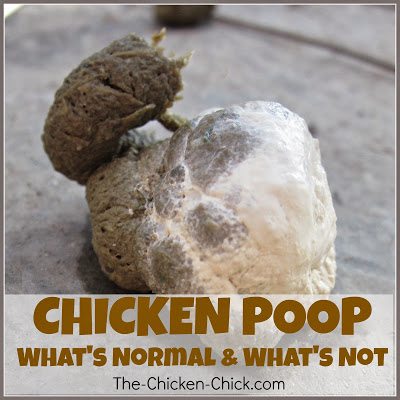
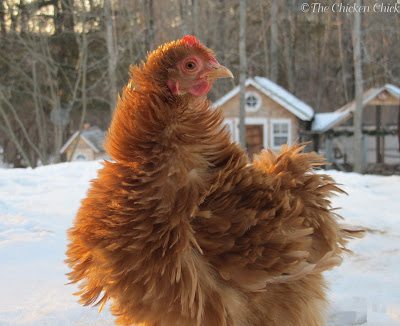
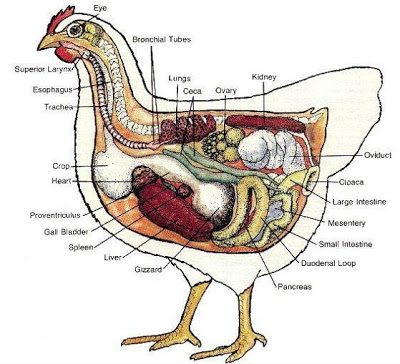
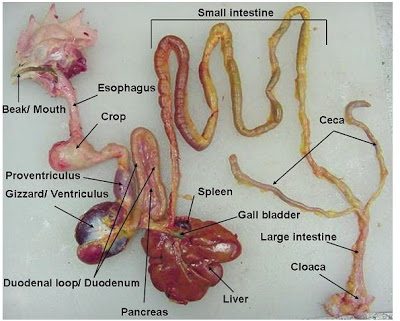
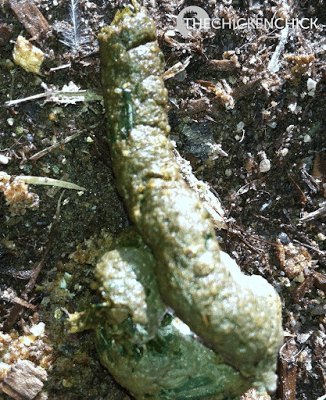
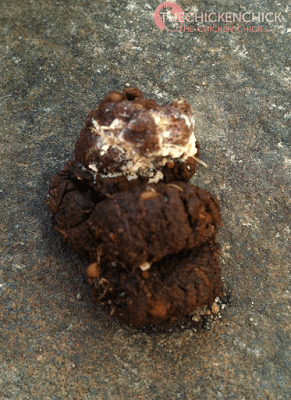
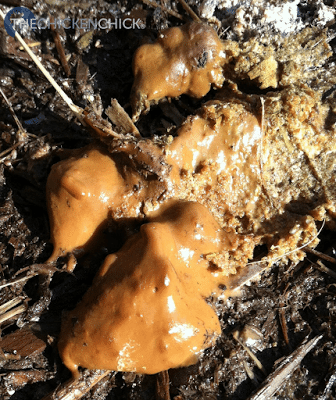
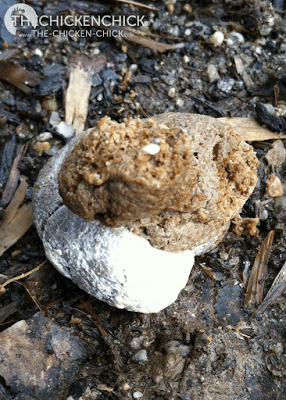
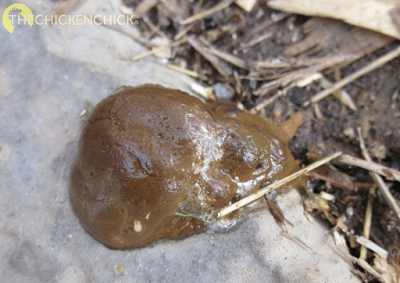
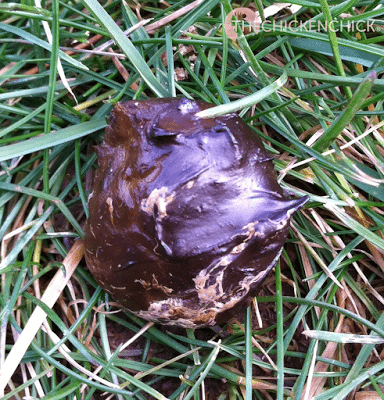
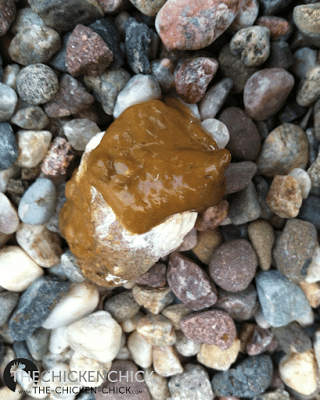
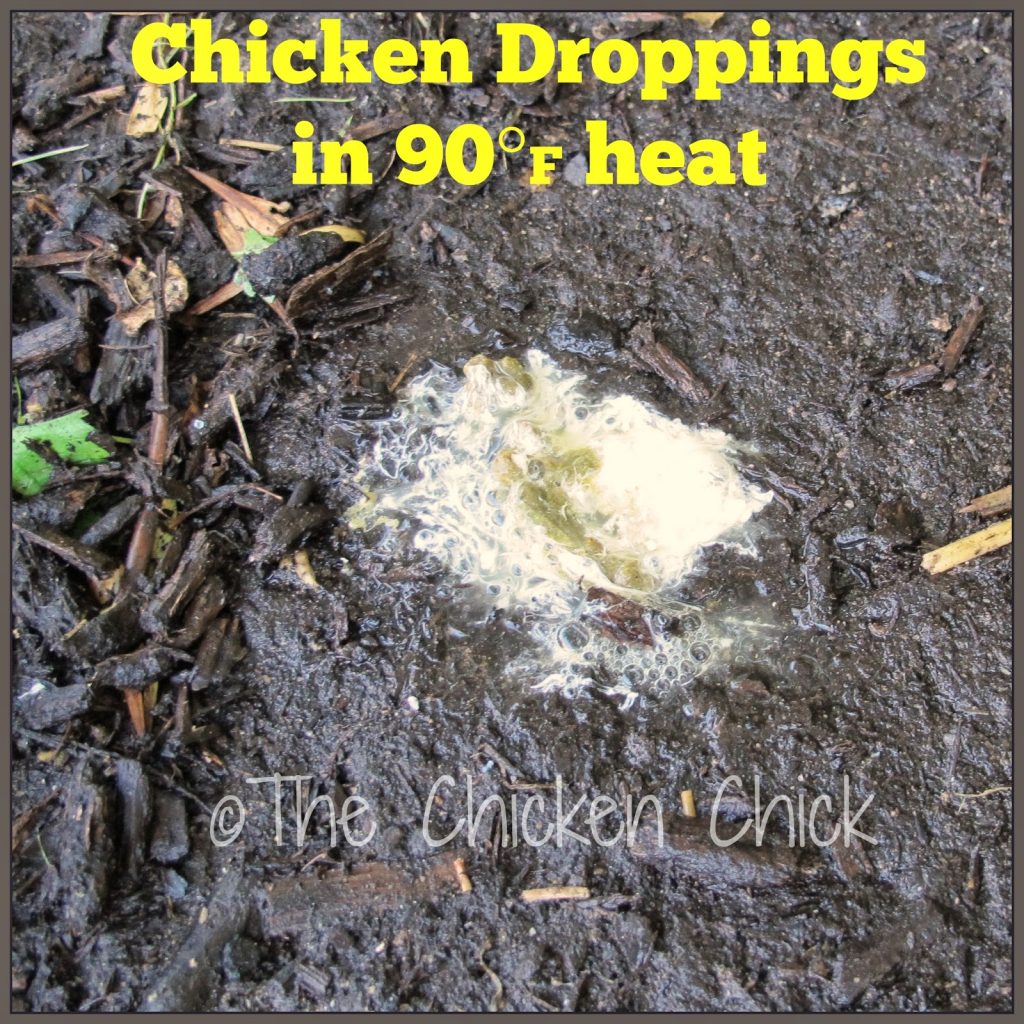
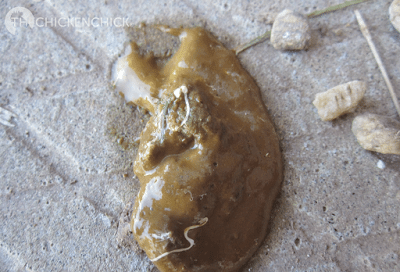
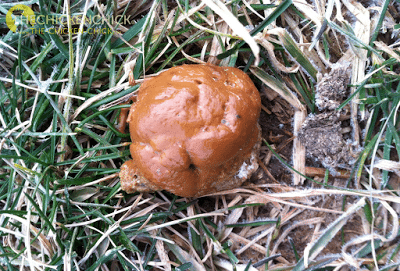
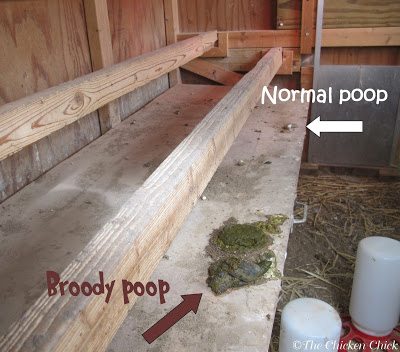

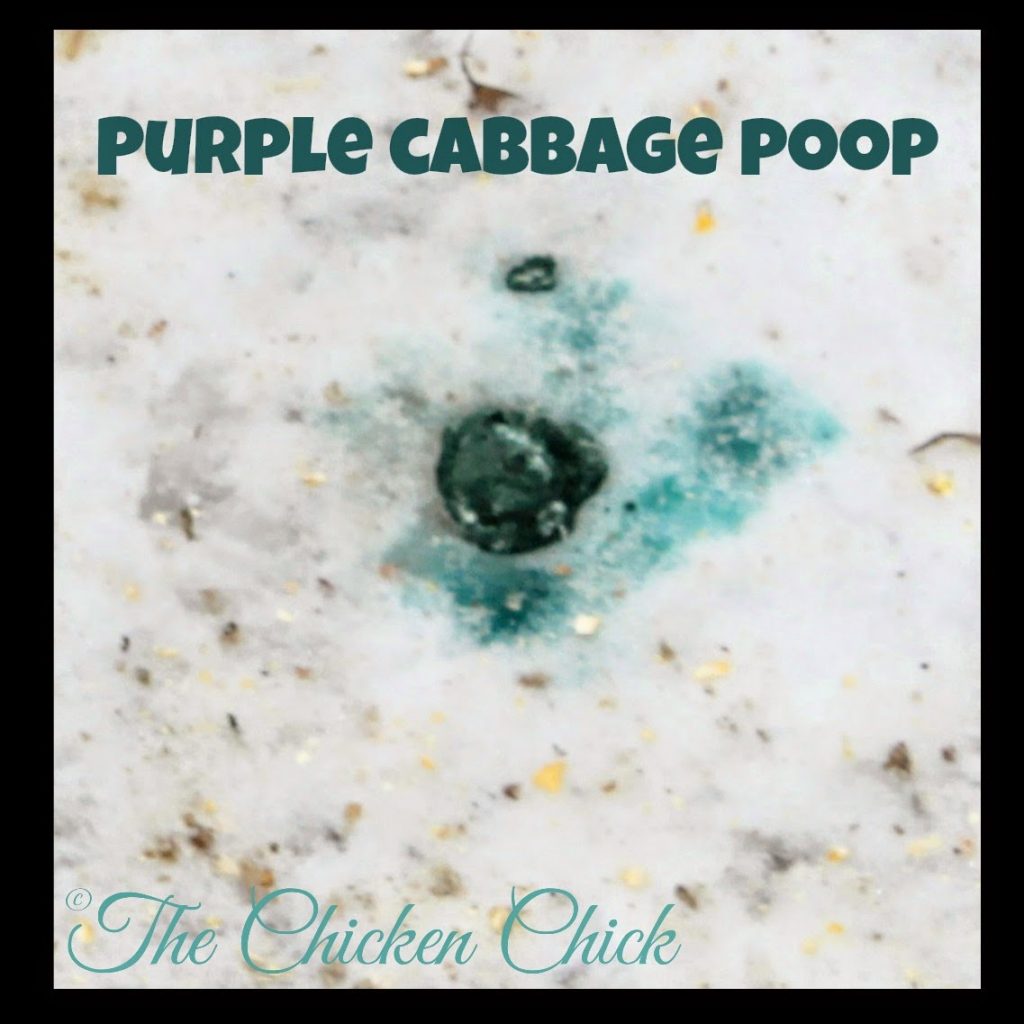
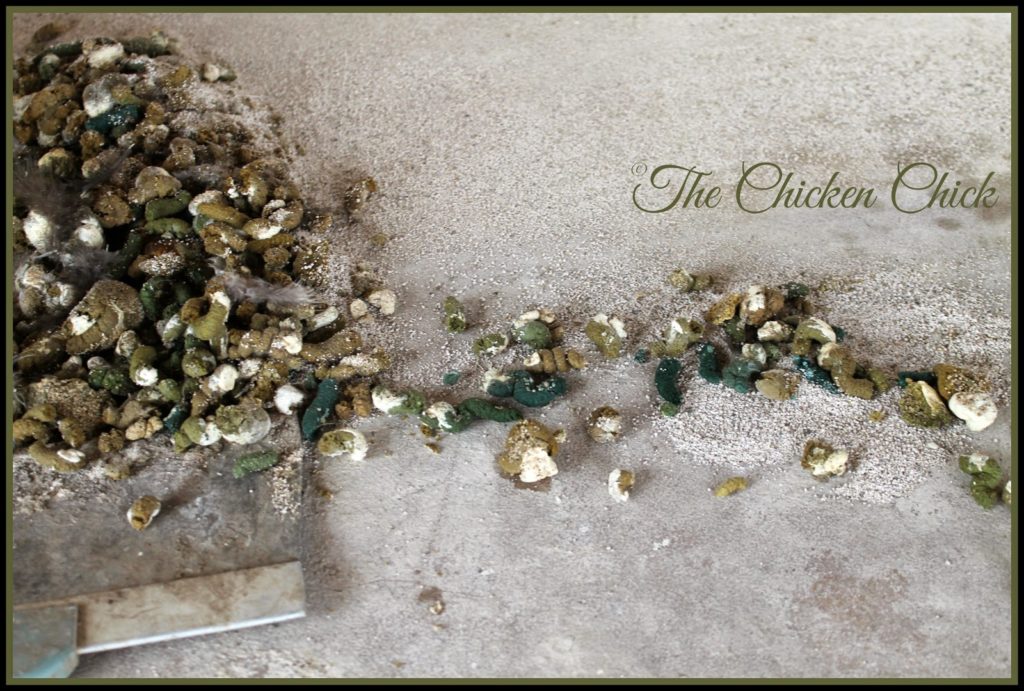
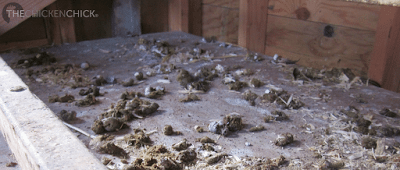
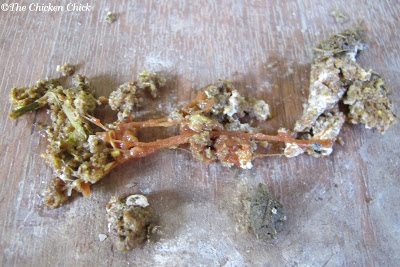
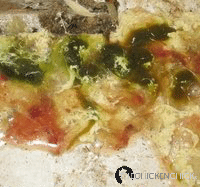
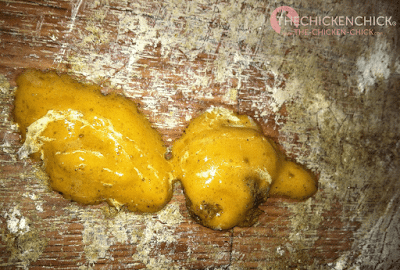
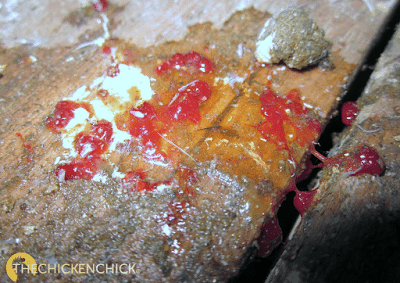
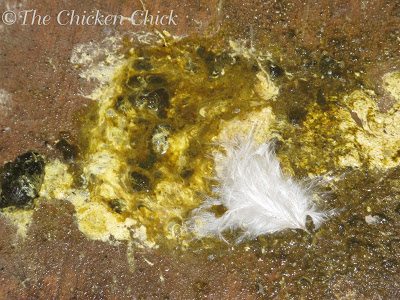
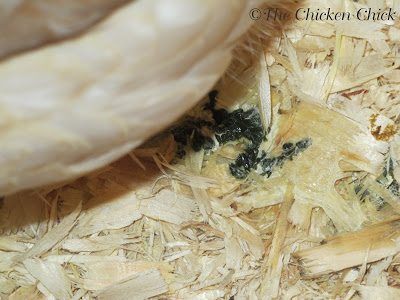
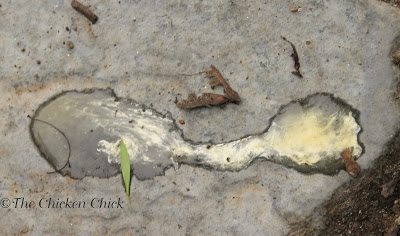
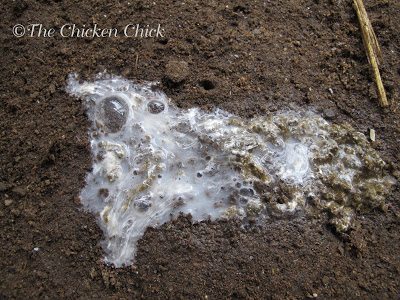
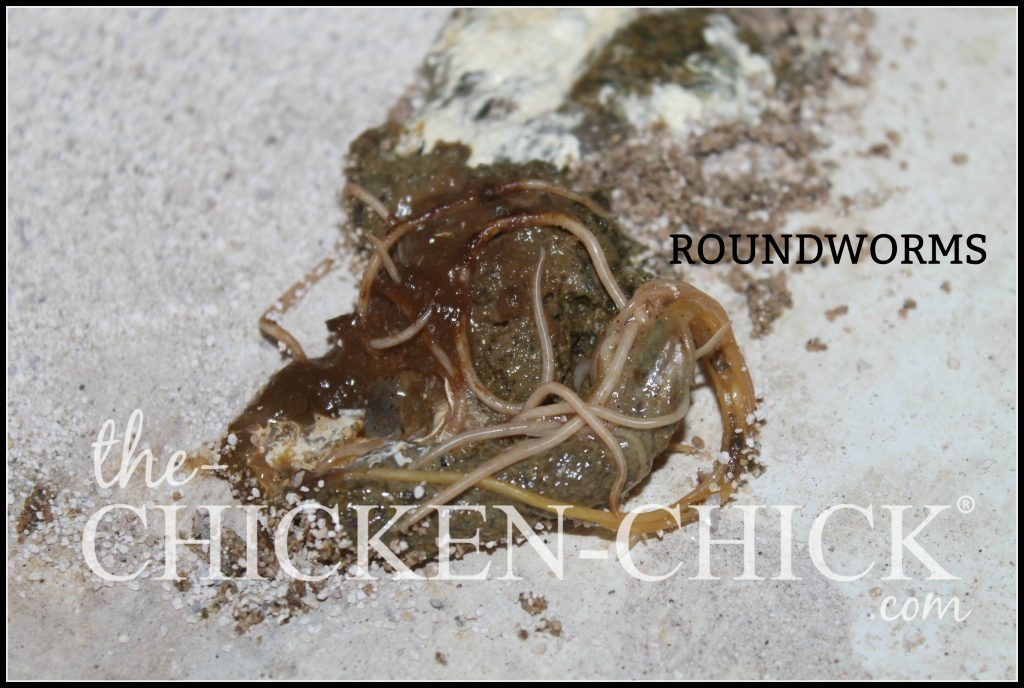
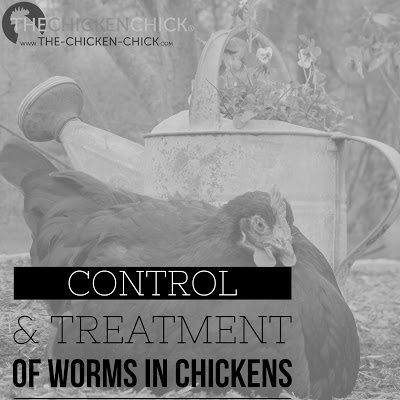

























thanks. my chicks are pooping dark green poops and i was worried.
Thanks, needed the refresher course.
Hi Kathy, thanks for another great article. I'm happy to know what I've seen and been concerned of is ceccal poop. But a question please: I have a 6 mo Black Minorca hen. She was a sick chick and was on an anti fungal and antibiotic at about 4 weeks old. She was so small. But she's caught up and is full sized and fiesty!! Not laying but only 3 of 10 new hens are. The problem is she is pasting up still. I keep cleaning and checking. I read about vent gleet. Any thoughts? Maybe time for the avian… Read more »
Hi Kathy I have learned from the information above that fortunately my little charges are pooping quite normally, I will continue to use this information in the future thank you very much
Hey there I was wondering how you mix wazine into a gallon of water? And is it bad it give while I've given corid (amprolium) need help please and thank you